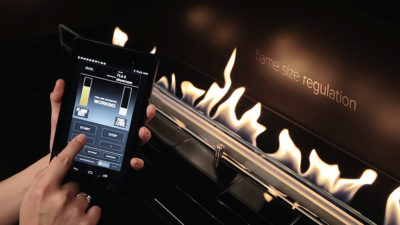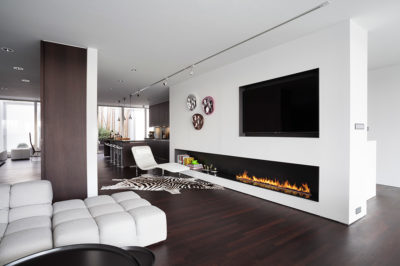In the world we live in, there is no denying that we all need to do more for our environment and the planet. It used to be “think globally act locally” and as we look to more sustainable forms of energy and with the prevalence of biofuel fireplaces increases in New Zealand, it will become more important for New Zealand to develop and agree to a set of standards to ensure the safe usage of biofuel and the safe installation of biofuel fireplaces. Currently, there are no specific regulations governing the use of biofuel fireplaces and different councils have trouble deciding under what legislation these fireplaces should fall – some consider them to be decorative gas fireplaces, others think they are liquid fuelled heaters. In fact, these biofuel fireplaces need a category and a set of standards all of their own. Other countries have already decided on a set of standards and Living Flame chooses to follow these standards in a similar way to how the Plumbers, Drain Layers and Gas Fitters Board follow the Australian standards for gas installations.
The Australian Standards are shown here:
Decorative alcohol fuelled devices
This mandatory standard applies to decorative alcohol fuelled devices.
• About decorative alcohol fuelled devices
• Mandatory standard
• Key requirements
About decorative alcohol fuelled devices
Decorative alcohol fuelled devices are designed for domestic use and produce a flame using alcohol as fuel. The devices are primarily used for decoration although larger models also may provide heating.
There are three common types of decorative alcohol fuelled devices:
• table top devices – small, inexpensive devices designed to sit on a table.
• freestanding devices – larger, heavier and generally more expensive than table top devices. While most are portable, they are not intended to be moved around and are likely to stand on the floor or be placed against a wall or in a prominent position as a feature.
• fixed devices – require installation in a fixed position (usually wall-mounted or recessed), often referred to as ‘fireplaces’.
The fuel used is typically ethanol in a liquid form or (less commonly) gel form. The most common form is methylated spirits (ethanol and around 10% methanol) which may also be marketed as bio-ethanol or eco-fuel.
Decorative alcohol fuelled devices are also known as:
• ethanol burners
• ethanol fireplaces
• bio-ethanol fireplaces.
Mandatory standard
The mandatory standard, Consumer Goods (Decorative Alcohol Fuelled Devices) Safety Standard 2017, came into effect on 15 July 2017.
The mandatory standard replaces the national interim ban on certain decorative alcohol fuelled devices. The interim ban commenced on 17 March 2017 and ended on 14 July 2017.
The purpose of the mandatory standard is to prevent or reduce the risk of injury to consumers from uncontrolled fires associated with decorative alcohol fuelled devices.
Since 2010, there have been at least 113 reported incidents in Australia involving decorative alcohol fuelled devices. These incidents have resulted in 105 injuries and 36 house fires.
The legislative instrument sets out the requirements for decorative alcohol fuelled devices. An explanatory statement, including a regulation impact statement is available from the link above.
Key requirements
The mandatory standard requires decorative alcohol fuelled devices to comply with the following requirements:
1. be a permanent fixture or have a dry weight of at least 8 kilograms and a footprint of at least 900 square centimetres;
2. meet the stability test set out in the European standard; and
3. come with a fuel container with a flame arrester or an automatic fuel pump system
4. have the prescribed warning.
The mandatory standard includes a transitional provision where suppliers have the option of complying with the specifications in the national interim ban from 15 July to 14 October 2017. From 15 October 2017 suppliers must comply with the mandatory standard.
The mandatory safety standard differs from the national interim ban in that the standard:
• deletes the 4.5 kilowatts test;
• includes the stability test set out in the European standard;
• requires all devices to be supplied with a flame arrester (or a fuel pump); and
• varies the warnings to also refer to deaths.
It’s pretty simple stuff but the most important things to consider are
- the safe handling and storing of the fuel
- the heat output and safe clearance around the fireplace to combustible material
- the airflow within the room and the potential flame disturbance
Living Flame uses biofuel burners sourced from BioFlame and Planika. Both brands of burners have been tested to a high level.
BioFlame burners are tested to meet UL and ULC standards which exceed European EN16647 and Australian Safety Standards.
Planika BEV burners have been tested by OMNI labs to meet UL standards and come with a multitude of safety features to assist in safe operation.

Many people also don’t realise the amount of heat a biofuel fireplace can generate – the burner used in the Brooklyn biofuel fireplace is a great example as it is producing 6.3 kW of heat, which is comparable with an equivalent gas fireplace. If you just put that burner in a “hole in the wall”, where is that heat going? At Living Flame, we always recommend a casing around the burner to protect against heat build-up above the fire, and we work together with you to custom make casings which create a unique look for our clients, while offering a greater level of protection. These casing are designed to push the heat back into the room and protect the wall cavities around the fireplace, they are generally made from steel and are ceramic lined to stop heat transfer.
If there comes a day that Natural Gas or LPG become unavailable in New Zealand, a great feature of choosing from a Living Flame range means we can easily convert any Living Flame fireplace to biofuel. This allows for continued use of your fireplace even through a change of fuel types, and even if your fireplace is 30 years old.
Future proofing your Living Flame Fire is an important part of the design process at Living Flame, and it’s good to know we have a manual or automated biofuel option to suit any fireplace. We have even fitted biofuel burners to wood burning fireboxes!


